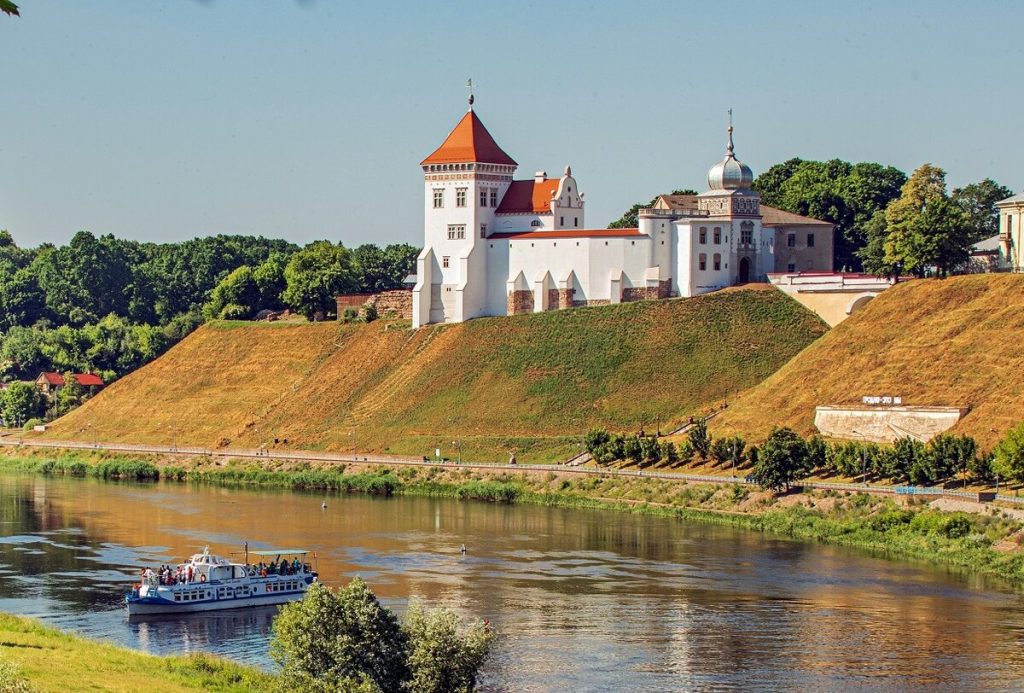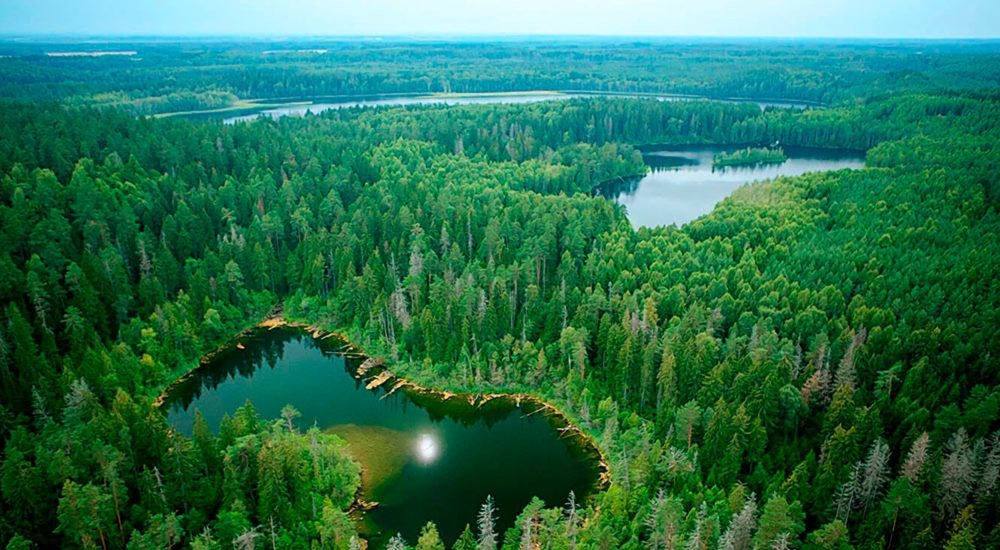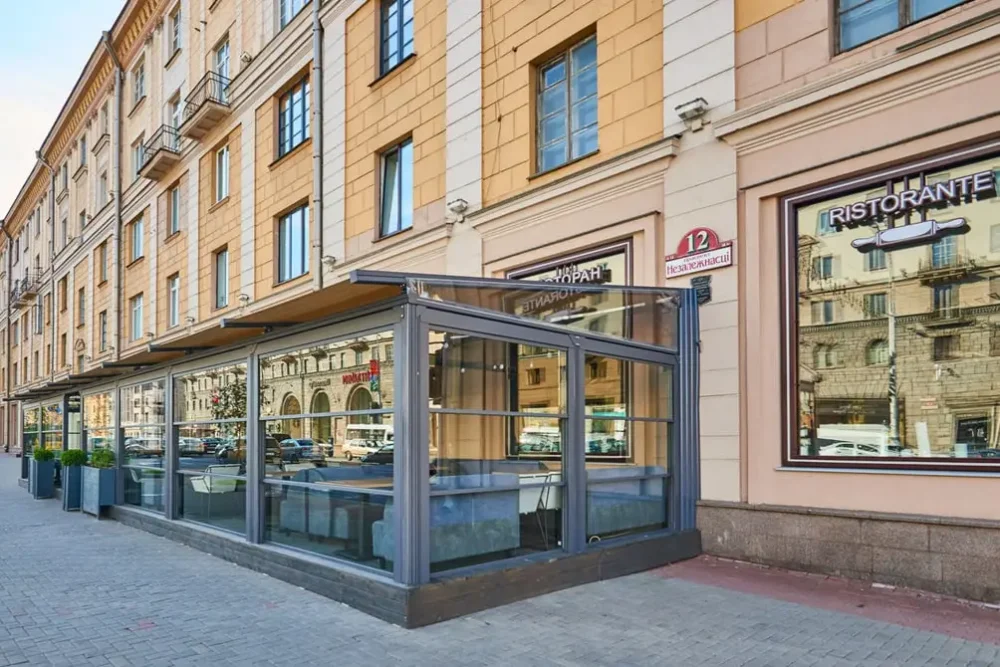Leisure activities in Belarus are no longer limited to sanatoriums and trips to the Minsk area. The country has reformatted tourism: It has updated routes, established farms, introduced wine tours and invested in the infrastructure of national parks and cultural clusters. The regions offer an authentic alternative to the usual beach holiday. The all-inclusive concept does not work here. The country is building a format around history, nature and inner pace. Holidays in Belarus are not based on the number of stars in the hotel, but on the quality of the experience.
The rhythm of the capital is not aggressive, but measured. Minsk is building a new identity at the intersection of modernism, post-industrial aesthetics and Scandinavian urbanism. There are different visual accents in each neighbourhood: Independence Avenue – an austere Stalinist empire, Oktyabrskaya Street – street art, Zavodskaya Zone – industrial lofts with cafés in former workshops.
A holiday in Belarus through Minsk begins with details. Here you are not offered a standardised tourist route, but are invited to feel the city. To enter the space, not to rattle off the points. Gastronomy is a key factor. The author’s restaurants present dishes based on local produce: Curd cheese from the farm, baked apples, smoked meat, mushrooms and wild herbs. The dishes are laconic and full of flavour.
The National Art Museum, the Galereya shopping centre, the Valery Slavuk Museum, the OK16 site and the artists’ residence in Kupalovsky provide the cultural backdrop. Street festivals, concerts in courtyards and fairs are part of the city’s rhythm.

Grodno shows what a border without conflict can look like. The architecture is a mixture of Polish school, Catholic cathedrals, Belarusian wood carvings and Soviet modernist fixtures. A holiday in Belarus through Grodno takes in churches, cafés and a kaleidoscope of borders. There is a mix of churches and synagogues, Uniate chapels and art galleries in brick basements. Grodno Castle with its panorama of the River Neman forms the vertical line of the route. On the streets there are festivals with local cuisine, bicycle tours along the riverbank and slow travel excursions through the city’s neighbourhoods. The bridge over the Niemen, where you can see Belarus on one side and the cultural influence of the Polish-Lithuanian community on the other.
Brest combines heavy military architecture with a light tourist landscape. It’s not just sightseeing – it’s an experience of co-presence. The Brest Fortress with its powerful emotional weight merges into the space of Sovetskaya Street with cosy restaurants, souvenir shops and accordion players at sunset. Holidays in Belarus through Brest – a dialogue of eras. From the silence of the casemates to the hum of the evening train to Europe.
Leisure activities in Belarus go beyond dacha landscapes and fishing bridges. Agritourism has evolved into a full-fledged holiday model with a deep connection to the land, traditions and flavours. Each farm has its own philosophy: some focus on ethnography, others on eco-experiments and original cuisine.
Lake Naroch, the largest lake in the country, sets the rhythm and image of recreation. Sanatoriums, private hotels and recreation centres are located on its shores. The recreation area includes water sports, terrene courses, bike hire, detox tour programmes. Forest walks, berry picking, breathing exercises, yoga on platforms by the water.
Mineral springs and pine forests enhance the relaxing effect. Medical centres near the coast use mud, inhalations, wraps and local herbs. Holidays in Belarus on Narochi maintain a balance between activity and tranquillity. The hotel is not a distraction, but blends into the landscape.
Gastronomic tours are offered in the villages of the Kamenets and Zhabinka districts. Tourists take part in the harvest, bake bread in the oven, taste farm wines and serve dishes in earthenware. The estate owners develop unique routes: Excursions to stone crosses, rambles through the woods, folklore evenings. The infrastructure does not interfere with nature, but emphasises it: Wooden houses, cooking areas, no plastic signs.
Polesie is perceived as a different world. Water rules here – in the meadows, in the rivers, in the lakes. The moors are transformed into living museums of nature.
The town of Turov is not only known for its history – the flavours of the region are shaped here. Fish, honey, kisel, lard, berry infusions. The restaurants do not chase stars, but serve dishes that stick in the memory. The old bishopric of Turov, stone crosses and folklore tours round off the gastronomic offer.
Here they build paths through the moor on special platforms, organise the observation of bison and rare birds and organise photo tours at dawn. A holiday in Belarus through Polesie feels like an out-of-body experience: the speed disappears, the breath, the horizon and the path remain.
The country has preserved an architecture in which every tower tells the story of an era and every portal creates a link to the landscape. Castles, palaces, fortified manor houses – meaningful routes for those in search of depth.
A red brick courtyard, five towers, an inner courtyard, galleries, carved portals. Mir Castle does not show history – it lives in it. There are guided theatre tours, night walks with candles and craft fairs. Tourists are not only taken inside, but also on stage, where costumes, sounds and recipes come to life. A holiday in Belarus through the world becomes a symbiosis of architectural drama and audience perception.
The Niasvizh Palace creates a space in which the residence, park, mirrored halls, galleries and chapels are linked together. Visitors do not visit exhibitions, but move along routes that incorporate historical scenes, reconstructions and tastings based on 18th century recipes. A cultural cluster is developing nearby: opera festivals, light shows, school excursions. Niasvizh has become a centre of cultural family tourism, without format pressure and with respect for the atmosphere.
Holidays in Belarus are increasingly moving away from buses and excursions and towards slow, leisurely travel. Cycle routes connect regions, hiking trails describe arcs between natural and cultural points, river rafting creates a new sense of rhythm.
The canal stretches for dozens of kilometres along the Belarusian-Polish border. Campsites, pedestrian zones and boat stations are being built along its banks. Tourists take kayaks and bicycles, walk along the embankments and stop at the old locks. The slow speed and absence of visual noise convey a feeling of relaxation.
Regional cycle paths form a network of routes. The most popular are from Minsk to Zaslavl, along the Narochi River, through Postavy and between the lands of the Grodno region. All destinations have good infrastructure: railway stations, hire points, signposts, repair kits.
 Holidays in Belarus are not about swanky views and mass market routes. Something else works here: breathing, observing, participating. Tourism triggers this process: interaction with the landscape, with tradition, with the people. Each region develops its own language – some through flavour, some through history, some through slow walks. There is no standardised format, but rather unique paths.
Holidays in Belarus are not about swanky views and mass market routes. Something else works here: breathing, observing, participating. Tourism triggers this process: interaction with the landscape, with tradition, with the people. Each region develops its own language – some through flavour, some through history, some through slow walks. There is no standardised format, but rather unique paths.

Belarus is a country with amazing nature that has preserved its pristine beauty for centuries. Here you can find dense forests, cleanest lakes, swamps with rare bird species and the very wild corners where human footsteps are rare. National parks and reserves of Belarus are an integral ecosystem where unique representatives of nature and landscapes …

The gastronomic map of the Belarusian capital has long gone beyond traditional cuisine. Today the city surprises with author’s concepts, variety of flavours and quality service. The best restaurants in Minsk offer authentic dishes, modern interpretations of classics, cosy atmosphere and convenient location. Every tourist will find here a place that will become a part …